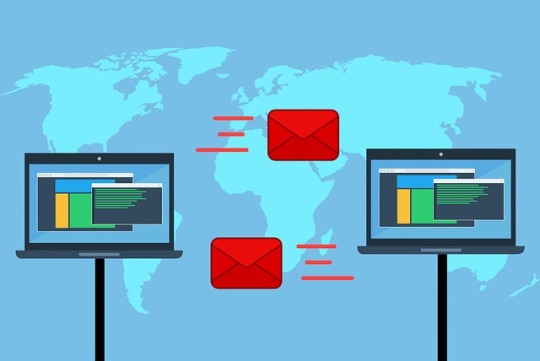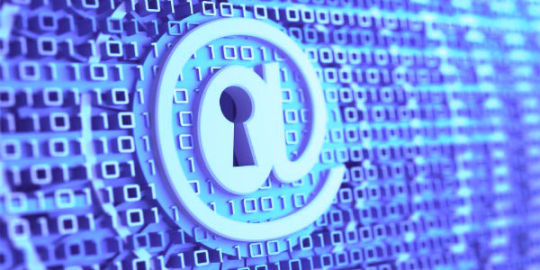Don't wanna be here? Send us removal request.
Text
What is an Email Server
A mail server (or email server) is a computer system that sends and receives an email. In many cases, web servers and mail servers are combined in a single machine.

Explanation of an Email Server
An email server is a computer with mail transfer agent (MTA) functions. Mail is exchanged between email servers running special software, which is built around standardized protocols for handling messages and their varied (multimedia) content.
An email server receives mail from another MTA, a mail user agent (MUA) or a mail submission agent (MSA) with the details of the transmission being defined by SMTP. When an MTA receives a mail and the recipient of the mail is not hosted locally, the mail is forwarded to another MTA. Every time this happens the MTA adds a "received" trace header on the top header of the message. This shows all the MTAs that have handled the message before it arrived in the recipient’s inbox. This useful feature allows administrators to see whether an optimal path was taken...read more over at - techopedia.

What is my mail server address?
Your mail server address and other information should be provided by your e-mail provider. This information is ususally found on either the e-mail providers support page or in documentations from your e-mail provider. On your e-mail provider's website, the information may be listed as SMTP and POP3 addresses.
Mail server information is often configured in a website's cPanel, or equivalent interface...and more info over at - computer hope.
Types of Mail Servers
Mail servers can be broken down into two main categories: outgoing mail servers and incoming mail servers. Outgoing mail servers are known as SMTP, or Simple Mail Transfer Protocol, servers. Incoming mail servers come in two main varieties. POP3, or Post Office Protocol, version 3, servers are best known for storing sent and received messages on PCs' local hard drives. IMAP, or Internet Message Access Protocol, servers always store copies of messages on servers. Most POP3 servers can store messages on servers, too, which is a lot more convenient.

How Email Clients are Handled
Many people use web-based email clients, like Yahoo Mail and Gmail. Those who require a lot more space - especially businesses - often have to invest in their own servers. That means that they also have to have a way of receiving and transmitting emails, which means that they need to set up their own mail servers. To that end, programs like Postfix and Microsoft Exchange are two of the most popular options. Such programs facilitate the preceding process behind the scenes. Those who send and receive messages across those mail servers, of course, generally only see the "send" and "receive" parts of the process...this and more over at - whatismyipaddress.com.
Step by Step – How the Little Parts Come Together
We use an online email service like Gmail, Yahoo Mail or AOL to compose an email, add attachments and other data files. Also, we use email client software like Thunderbird, Outlook Express, Outlook or Mac OS X’s Mail.
When we send an email, our computer connects to our email service’s mail server. A server is a centralized computer which manages a specific type of service. An email server for instance, handles emails. The email server responsible for sending emails is called the SMTP (Simple Mail Transfer Protocol) server. One SMTP server can pass on the mail to another SMTP server and relay it to the destination through several hops.
Every email has the sender’s address (e.g. [email protected]) and the recipient’s in the To field (e.g. [email protected]). When an email is sent, the email client connects to the SMTP server of the sender’s email service (e.g. mailserver.sendermail.com). The client transmits the address of the sender, the address of the recipient and the content of the message.

The SMTP server goes to work at locating the whereabouts of the recipient. Using the recipient’s mail ID (i.e. [email protected]) it locates the domain name – e.g.recipientmail.com.
Note: If the recipient’s mail ID had the same domain name as the sender, then the process would be simpler. The SMTP server would have transferred the mail to its local outgoing mail server (POP3 or IMAP).
Each domain name represents a unique Web address, called an Internet protocol (IP) address. Think of it as postal addresses of the internet. The link between domain names to their IP addresses is stored in the Domain Name Registry. The SMTP server then contacts the server where the registry is kept (The DNS Server). The DNS server sends back the address to the SMTP server.
The SMTP server then proceeds to hand over the email to the SMTP server of the recipient’s email service (let’s call it mailserver.recipientmail.com). This SMTP server checks and confirms that the mail addressed to [email protected] belongs to it and hands it over to its counterpart – the POP3 server (or the IMAP server).
Post Office Protocol (POP3) servers are the servers that do the job of receiving mails. The number “˜3′ is the version number of the protocol in use. POP3 servers have mail accounts (our email IDs). Each mail account is mapped to a username-password combination. Once the message is handed over to the POP3 server, it is kept and stored in the mail account till the recipient logs in and checks the mail.
An email client connects to the POP3 server and tells it to allow download of the email. Once downloaded to the local machine, POP3 mailboxes do not retain a copy of the email. Thus, you cannot check your emails from another PC as it has already been downloaded. To nail this difficulty, IMAP was introduced. IMAP4 (Internet Message Access Protocol version 4) simply retains a copy of the emails on the server. This allows you to access your e-mail from any location with an internet connection.

Differences between the two protocols
The obvious differences between the two protocols can be felt. POP3 mails are not limited by mail sizes as they get stored locally on your computer. Also because of less server storage space they are cheaper to support. But they make it difficult to export your emails if you decide to switch email programs or even operating systems.
With IMAP you can just download them again. With IMAP, sent mail and drafts are also uploaded to the server. The one apparent disadvantage of IMAP is its slower speeds because of server based functions.
POP3 is common but IMAP4 is newer and more advantageous for some of these reasons...visit - MUO to know more.
Choosing the best email server available on the internet for you is not an easy task. You can find these email server service that is best for you so that you have access to your communications from anywhere anytime you like. Go to - Duocircle to send your email to your clients from any programs from anywhere.
1 note
·
View note